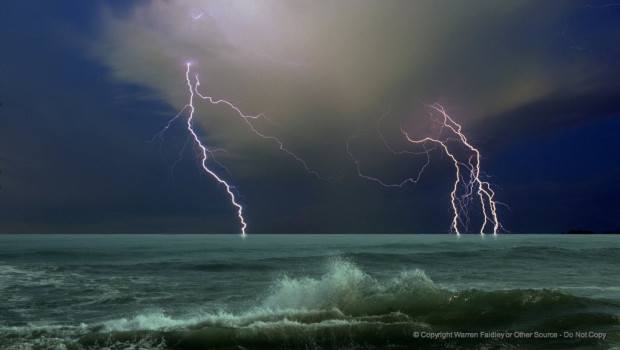Be Lightning Alert
Published on May 10th, 2016
by Don Margraf, Sailing Magazine
Recently I received a phone call from a sailboat in the middle of the Pacific Ocean, more than 1,000 miles from the nearest landfall. The boat had been struck by lightning and the autopilot, chartplotter and navigations instruments were all wiped out.
Serendipitously, the satellite phone remained unscathed. I was able to help the crew, made up of good sailors who were familiar with the boat, navigate by dead reckoning from my desk 3,000 miles away. It was an important lesson on lightning damage: You never know what or how much will be damaged in a lightning strike and in today’s digital age, there’s nothing more basic than a cell phone.
To truly understand lightning and make a strategy for safe sailing, the best place to start is the fine print in your insurance policy. If your deductible is double or more for lightning claims, it should tell you that lightning finds the most expensive stuff to demolish. If your policy completely rules out certain locations and times of year, the obvious conclusion is some places have a lot of lightning and you should stay out of a storm.
If you keep reading the fine print, you will find thousands of pages of lightning science and reporting. Read enough of it and you will finally conclude that scientists still disagree about lightning, but insurance companies do not: Lightning is dangerous.
Prepare yourself and your boat for storm season by understanding your boat. Review and understand the basic language of boats and lighting: ground, earth, bonding system, D.C. negative, shore power ground, 4-gauge wire, 8-gauge wire, ground plate; these are often mixed in hazy confusion. If you follow the green ground wire around your boat, it will lead you to places and pieces you should know about.
If you find a through-hull you forgot, the exercise has already paid off, so check it for leaks, loose or rusty clamps or a stuck handle. Take a picture, make notes and keep going. Keep a special file for pictures of pieces you don’t understand. If you find, for example, a through-hull that’s an odd mix of metal and plastic pieces, you are correct to not understand it. Lightning will heat the metal and melt the plastic. – Full report









 We’ll keep your information safe.
We’ll keep your information safe.